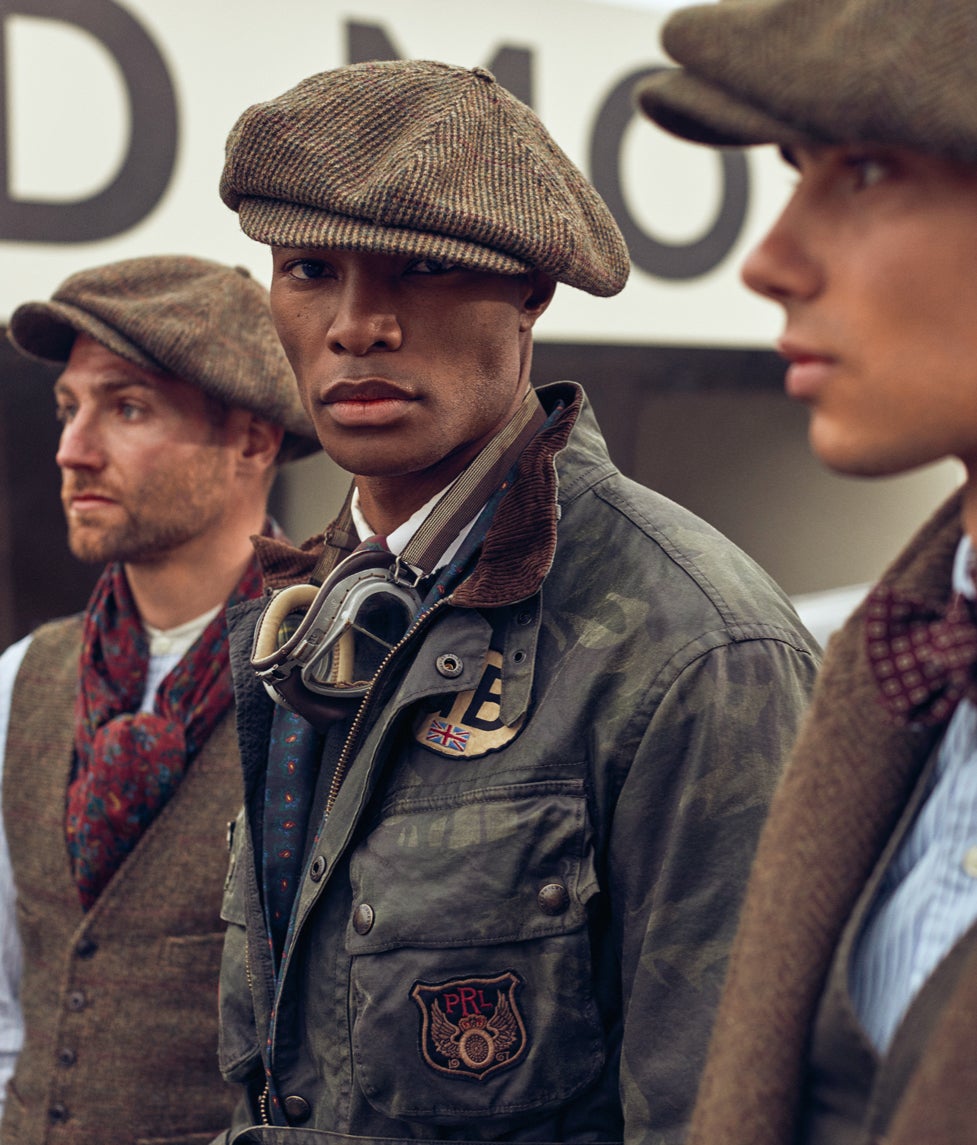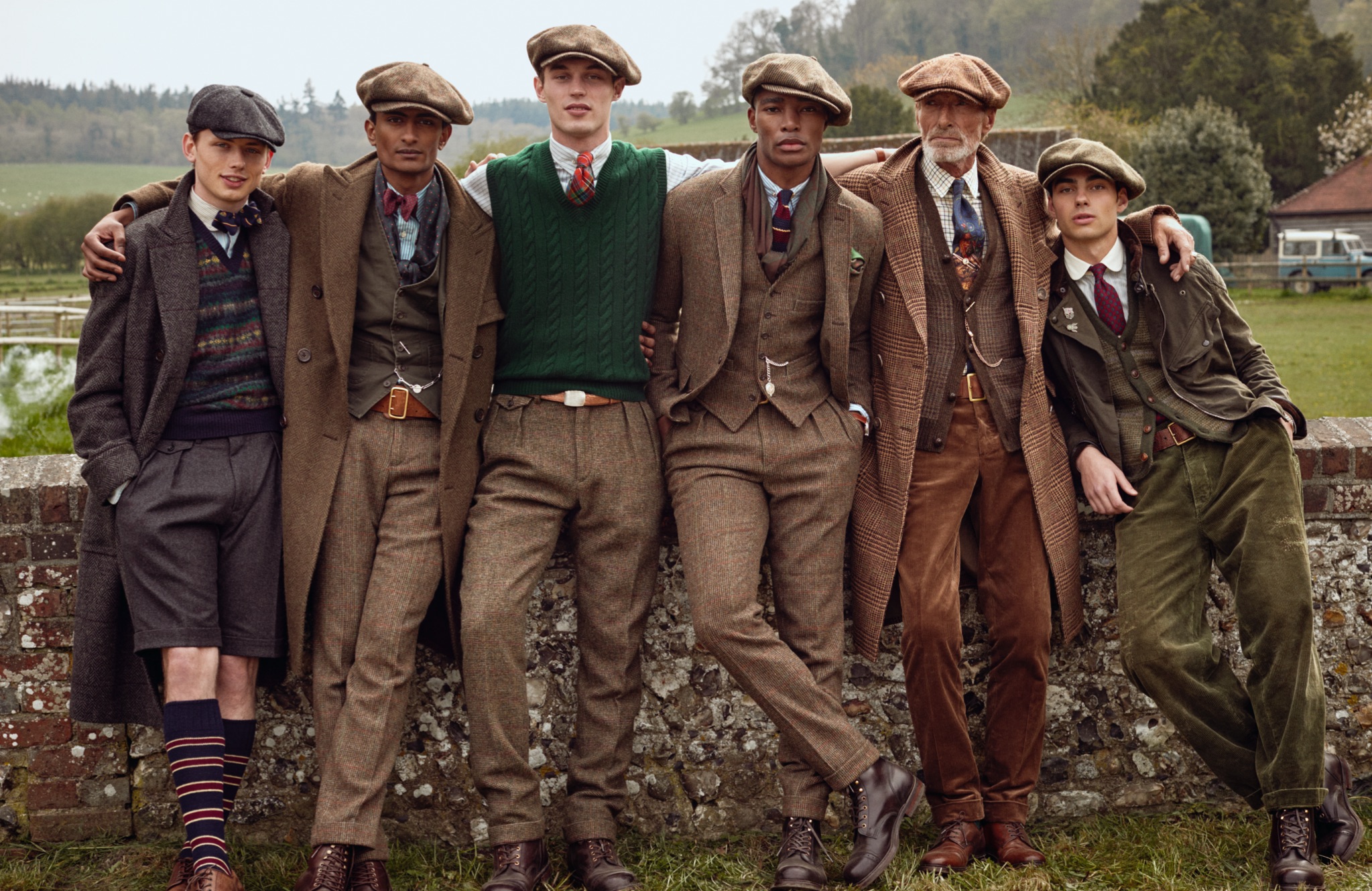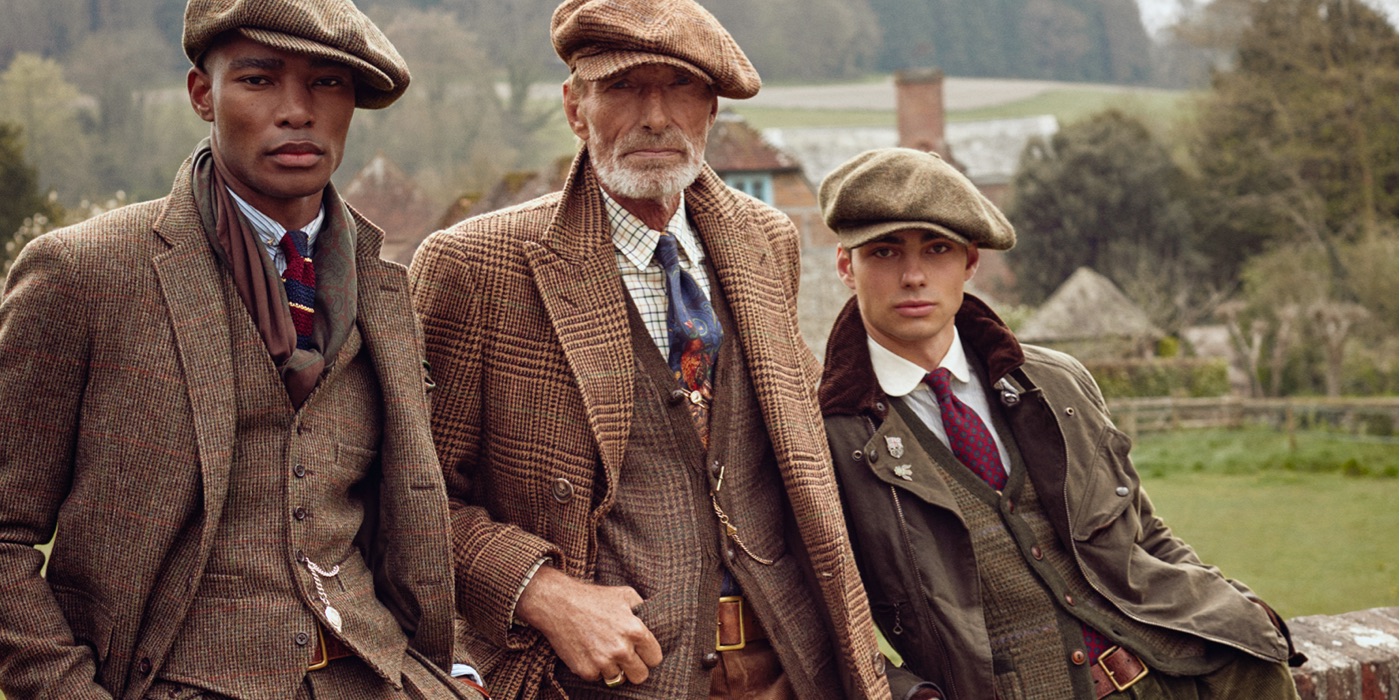
Boss
Tweed
Exploding the size of iconic tweed patterns to turn three-piece suits, Polo coats, and blazers into statement pieces worth notice
To start, it would seem relevant to briefly mention a detail or two from the history of tweed. The fabric, as you may have guessed, was invented in the Scottish Highlands to shield farmers and field workers from the cold, damp climate. From there, it caught the attention of the sportier members of the English upper class, who adopted it as a go-to uniform for their favorite country pursuits - shooting, fishing, hunting, and generally mucking about. The patterns they chose - Glen plaid, herringbone, houndstooth, windowpane - could also be customized and smartened up for more formal occasions. Tweed blended quite nicely into the landscape as an early form of camouflage, but paired with a tie and vest it could also stand out - a note of outdoorsy adventure among the tea-and-crumpets set.

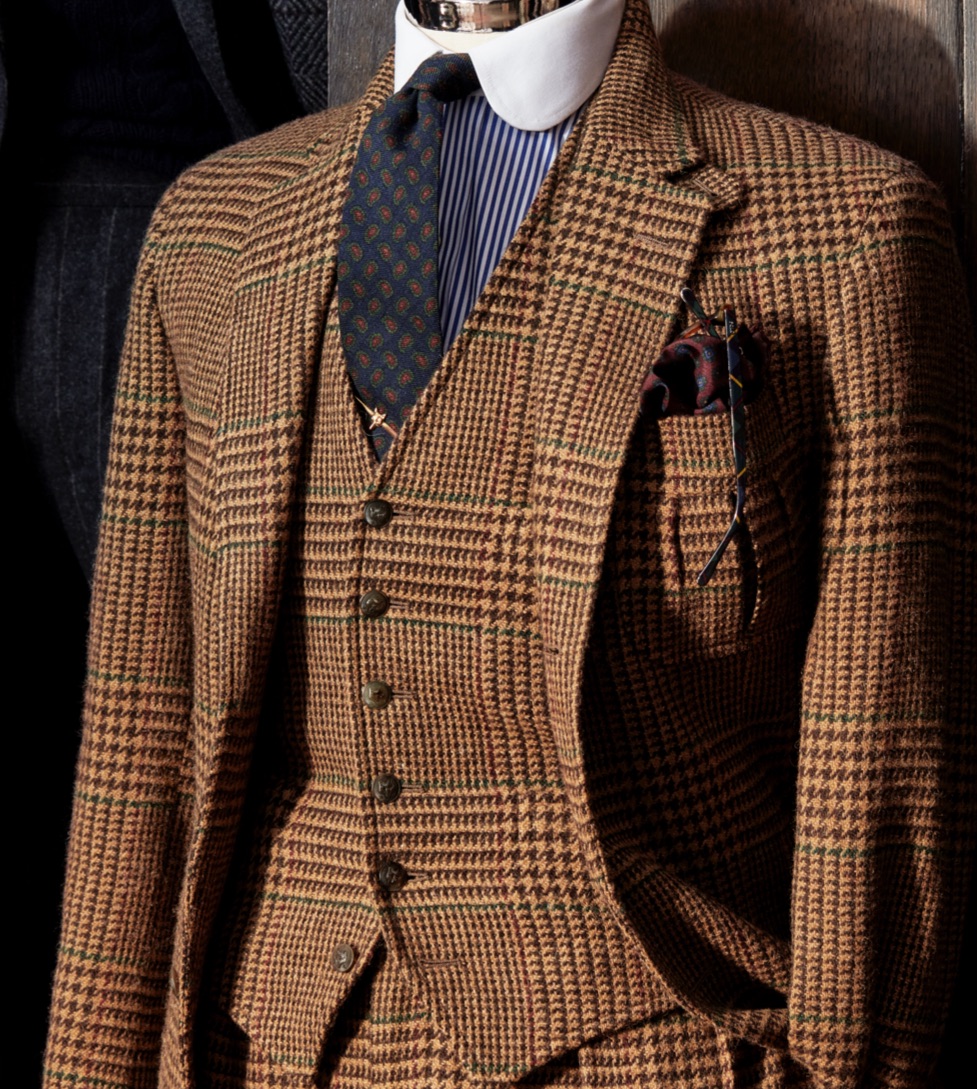
A three-piece suit in a large-scale cognac-and-camel Glen check. The fabric was not only woven exclusively in Britain for the collection; it has a pattern detail that is purely Polo: a windowpane grid of wine and green “guard” the pattern, meaning the colours run along the edge of the plaid, giving it the unmistakable look of Ralph Lauren
To us, there has only ever been one way to make something: It has to be authentic and of top quality. History is a guide to such aims, but taste allows for its own interpretation. Starting more than four decades ago, we began working with some of the oldest, most admired textile mills in the Britain and Ireland, developing unique patterns with a specific vocabulary distinct and exclusive to our collections.
One particular Polo coat has an unusual backstory, and was inspired by a piece of Ralph’s own. The original was a brown-and-tan tweed called “parquet,” a riff on herringbone that creates a subtle diamond pattern. For the Polo Originals collection, we worked together with Abraham Moon & Sons, an English mill founded in 1837 - the year Queen Victoria ascended the British throne - and the colour scheme was tweaked to charcoal with a subtle purple overcheck.
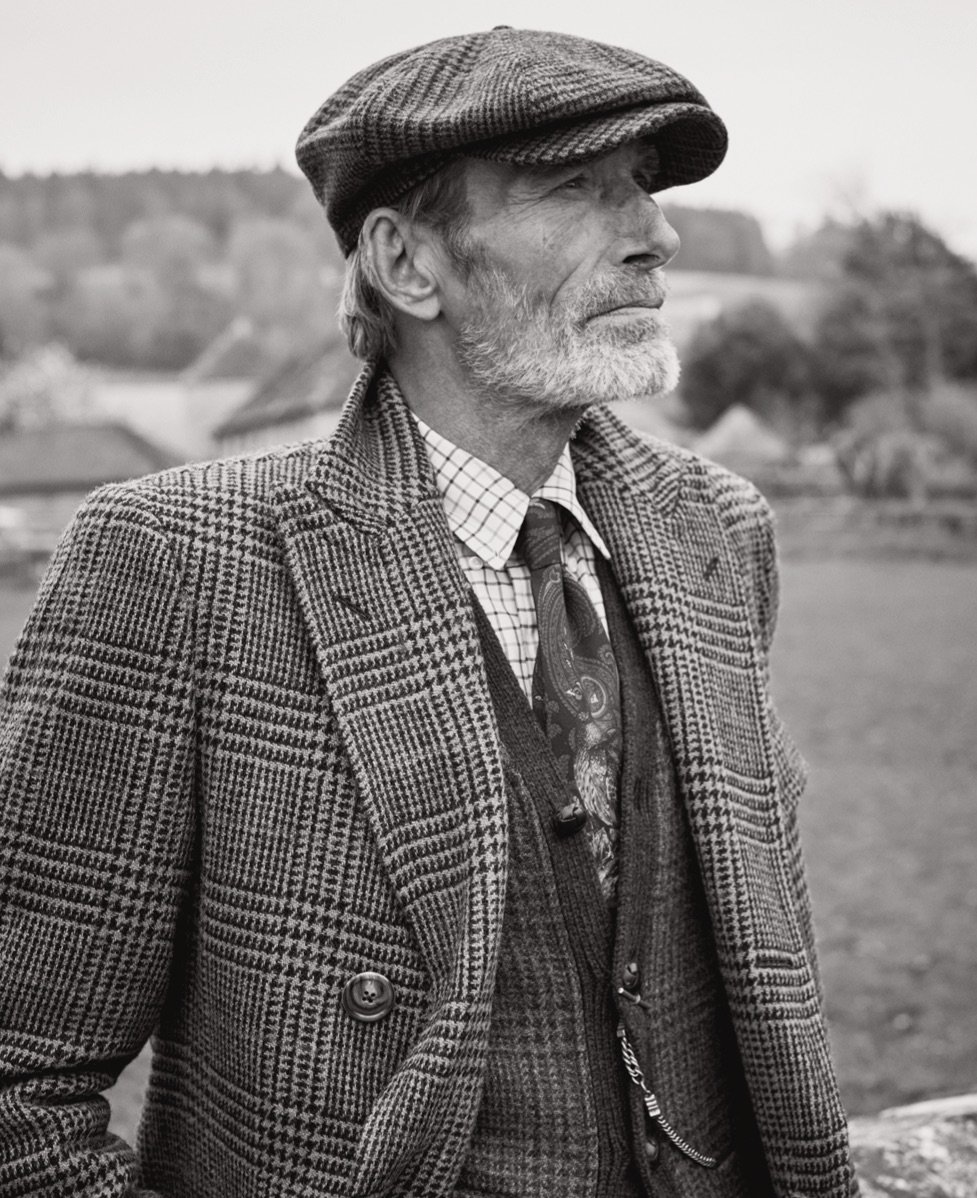
As seen here, the Polo coat has long been a staple of our lineup. Its utilitarian details (a breast pocket flap to deflect the rain) are inspired by the early era of English polo, when players would slip such coats over the bulk of their uniforms to keep warm between matches. The Polo coat is slightly oversize for practical layering, and features a belted back, gauntlet cuffs, and enlarged buttons to make it easy to put on and take off
The close relationship between the last remaining heritage mills and Polo gets its due in the Polo Originals collection with a striking selection of tweed suits, coats, hats, and blazers. With their enlarged graphic patterns that have been washed to appear almost blurred, these are checks that unapologetically announce themselves. They also lend a note of individuality to their wearer and are a kind of consummate visual representation of discerningly classic taste. As a result, these pieces - enduring in appeal for both their character and purpose-built utility - have a life span that goes well beyond one season.
Tweeds like these give the other things hanging in your closet new places to go. They may be born of the country, but even when paired with something as simple as denim and a button-down, they have what it takes to make it in the city. There are strict rules in the way we develop our patterns. Certain herringbones are Polo, and certain ones aren’t. Take a close look at the cognac-and-camel Glen check, as it’s referred to at the mill, that’s been used in different scales on a three-piece suit (above) and a Polo coat. For the former, a windowpane grid of wine and green “guard” the pattern, meaning the colours run along the edge of the plaid; for the latter, the colours are centered on it. Both designs give the pieces a richness, and make them unmistakable, timeless, and rare.
MORE FROM THE POLO GAZETTE
Tough & Refined
The art–and eternal now–of putting two surprisingly unexpected things together roars to life in this fall’s Polo Originals collection, inspired by the golden era of Grand Prix car racing
By Jay Fielden
